AMAZON multi-meters discounts AMAZON oscilloscope discounts
Several methods of producing electrical power are either in limited use or in the experimental stage at the present time. Some of these methods show promise as a possible electrical power production method for the future. Alternative power systems are discussed in this Section (Section 5).
TERMINOLOGY
This Section deals with alternative electrical power production systems. After studying this Section, you should have an understanding of the following terms:
- Solar cell
- Solar energy system
- Solar heating
- Geothermal power system
- Wind energy system
- Magnetohydrodynamic (MHD) system
- Nuclear fusion power system
- Magnetic confinement fusion
- Fuel cell system
- Tidal power system
- Coal gasification
- Oil shale fuel production
- Alternative nuclear power plants
- Biomass
POTENTIAL POWER SOURCES
Solar power is one potential electrical power source. The largest energy source available today is the sun, which supplies practically limitless energy. The energy available from the sun far exceeds any foreseeable future need. Solar cells are now being used to convert light energy into small quantities of electrical energy. Possible solar-energy systems might include home heating or power production systems, orbiting space systems, and steam driven electrical power systems. Each of these systems utilizes solar collectors that concentrate the light of the sun so that a large quantity of heat will be produced. Potentially, this heat could be used to drive a steam turbine in order to generate additional electrical energy.
Geothermal systems also have promise as future energy sources. These systems utilize the heat of molten masses of material in the interior of the earth. Thus, heat from the earth is a potential source of energy for power generation in many parts of the world. The principle of geothermal systems is similar to other steam turbine-driven systems. However, in this case, the source of steam is the heat obtained from within the earth through wells.
These wells are drilled to a depth of up to two miles into the earth. Geothermal sources are used to produce electrical energy in certain regions of the western United States.
Wind systems have also been considered for producing electrical energy. However, winds are variable in most parts of our country. This fact causes wind systems to be confined to being used with storage systems, such as batteries. It is possible that wind machines may be used to rotate small generators which could, potentially, be located at a home. However, large amounts of power would be difficult to produce by this method.
Another energy source which has some potential for future use is magneto-hydrodynamics (MHD). The operation of an MHD system relies upon the flow of a conductive gas through a magnetic field, thus causing a direct cur rent (DC) voltage to be generated. The electrical power developed depends upon the strength of the magnetic field that surrounds the conductive gas, and on the speed and conductivity of the gas. At the present time, only small quantities of electrical energy have been generated using the MHD principle; however, it does have some potential as a future source of electrical energy.
Still another possible energy source is nuclear fusion. This process has not been fully developed, due to the extremely high temperatures that are produced as fusion of atoms takes place. A fusion reactor could use tritium or deuterium (heavy hydrogen) as fuels. These fuels may be found in sea water in large quantities, thus reducing the scarcity of nuclear fuel. It is estimated that there is enough deuterium in the oceans to supply all the energy the world would ever need.
If nuclear-fusion reactors could be used in the production of electrical energy, the process would be similar to the nuclear-fission plants which are now in operation. The only difference would be in the nuclear reaction that takes place to change the circulating water into steam to drive the turbines.
The major problem of the nuclear-fusion process is controlling the high temperatures generated, estimated to reach 100 million degrees Fahrenheit.
Another energy source which could be used in the future is the fuel cell. This type of cell converts the chemical energy of fuels into direct cur rent electrical energy. A fuel cell contains two porous electrodes and an electrolyte. One type of fuel cell operates as hydrogen gas passes through one porous electrode and oxygen gas passes through the other electrode. The chemical reactions of the electrodes with the electrolyte either release electrons to an external circuit, or draw electrons from the external circuit, thus producing a current flow.
Still another possible alternative power production system utilizes tidal energy. Tidal systems would use the rise and fall of the water along a coastal area as a source of energy for producing electrical power. Coal gasification is yet another process that could be used for future power systems.
This process is used to convert the poorer grades of coal into a gas. The use of oil shale to produce fuel is also being considered.
It should be pointed out that many of the future energy sources are direct conversion processes. For example, the fuel cell converts chemical energy directly to electrical energy, and the solar cell converts light energy directly to electrical energy. A more complex transformation of energy takes place in most power plants today. Heat energy is needed to produce mechanical energy, which produces electrical energy. This explains the inefficiency of our present systems of producing electrical energy. Perhaps advances in electrical power technology will bring about new and more efficient methods of producing electrical energy.
SOLAR ENERGY SYSTEMS
For many years, many have regarded the sun as a possible source of electrical power. However, few efforts to use this cheap source of energy have been made. We are now faced with the problem of finding alternative sources of energy, and solar energy is one possible alternative source.
The sun delivers a constant stream of radiant energy. The amount of solar energy coming toward the earth through sunlight in one day equals the energy produced by burning many millions of tons of coal. It is estimated that enough solar energy is delivered to the United States in less than one hour to meet the power needs of the country for one year. This is why solar energy is a potential source for our ever-growing electrical power needs. However, there are still several problems to be solved prior to using solar energy. One major problem is in developing methods for control ling and utilizing the energy of the sun. There are two methods for collecting and concentrating solar energy presently in use. Both of these methods involve a mirror-like reflective surface.
The first method uses parabolic mirrors to capture the energy of the sun. These mirrors concentrate the energy from the sun by focusing the light onto an opaque receiving surface. If water could be made to circulate through tubes, the heat focused onto the tubes could turn the water into steam. The steam, then, could drive a turbine to produce mechanical energy. The mirrors could be rotated to keep them in proper position for the best light reflection.
The second method uses a flat-plate solar collector. Layers of glass are laid over a blackened metal plate, with an air space between each layer. The layers of glass act as a heat trap. They let the rays of the sun in, but keep most of the heat from escaping. The heated air could be used to warm a home.
The first widespread use of solar energy will probably be to heat homes and other buildings. Experiments in doing this are already under way in many areas. To heat a home, a flat-plate collector may be mounted on the part of the roof that slopes in a southward direction. It should be tilted at an angle to receive the greatest amount of sunlight possible.
The sun would be used to heat a liquid (or air) that would be circulated through the collector. The heated liquid (air) would be stored in an insulated tank and, then, pumped into the house through pipes and radiators (air ducts). By adding a steam turbine, a generator, etc., to the solar collector just discussed, the heat could be used to drive the steam turbine to generate electrical energy. This solar power system is illustrated in FIG. 1.
Another major problem in solar heating is in the storage of the heat produced by the sun. In areas that have several cloudy days each year, an auxiliary heating system is required. However, solar energy is being used today on a limited basis. For instance, flashlights and radios can be powered by solar cells. The main advantage of this usage is that a solar battery can be used for an infinite period of time. Considering all of these aspects of solar energy and its potential, many feel that solar energy will be the next major form of energy to be utilized extensively in the United States.
The development of large-scale power production systems which use solar energy, however, remains questionable.
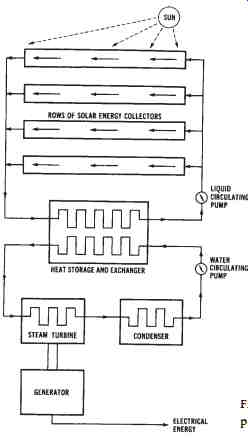
FIG. 1. Block diagram of a solar power system
GEOTHERMAL POWER SYSTEMS
About 20 miles below the crust of the earth is a molten mass of liquid and gaseous matter called magma, which is still cooling from the time that the earth was formed. When this magma comes close to the crust of the earth, possibly through a rupture, a volcano could be formed and erupt.
Magma could also cause steam vents, like the ones at the "Geysers" area in California. These are naturally occurring vents that permit the escape of the steam formed by the water that comes in contact with the under ground magma. A basic geothermal power system is shown in FIG. 2, and the understructure for such a system is illustrated in FIG. 3.
In the 1920s, an attempt was made to use the Geysers area as a power source, but the pipelines were not able to withstand the corrosive action of the steam and the impurities in it. Later, in the 1950s, stainless steel alloys were developed that could withstand the steam and its impurities, so the Pacific Gas and Electric Company started development of a power system to use the heat from within the earth as an energy source. The first generating unit at the Geysers power plant began operation in 1960. At present, more than 500 megawatts of electrical power are available from the generating units in the Geysers area.

FIG. 2. Drawing of a basic geothermal power system.
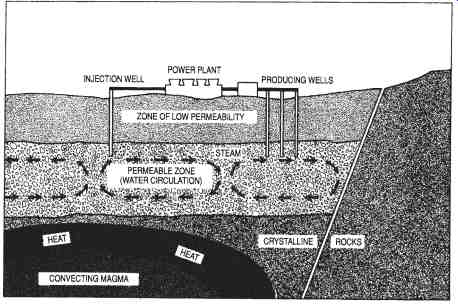
FIG. 3. Drawing of a basic geothermal power system that illustrates the
underground structure (Pacific Gas and Electric Co.)
In the geothermal system, steam enters a path (through a pipeline or a vent) to the surface of the earth. The pipelines that carry the steam are constructed with large expansion loops, causing small pieces of rock to be left in the loop. This system of loops avoids damage to the steam turbine blades. After the steam goes through the turbine, it goes to a condenser, where it is combined with cooler water. This water is pumped to cooling towers, where the water temperature is reduced. This part of the geothermal system is similar to conventional steam systems.
The geothermal power production method offers another alternative method of producing electrical power. This method makes it possible to control energy, in the form of steam or heated water, that is produced by natural geysers or underground channels. The high-pressure steam for power production is made without burning any of our fossil fuels. Thus, this method can be used to drive turbine-generator systems, such as the one at the Geysers system in California.
The setting up of a geothermal power plant requires the drilling of holes deep into the surface of the earth. One hole may be used to send cold water down into the tremendously hot material located under the surface of the earth. An adjacently drilled hole could be used to bring steam back to the surface. This method is capable of being used in any area of the world, but it requires drilling holes up to 10 miles deep. On the other hand, natural geothermal steam production is limited to active volcanic areas, such as the Geysers area of the United States. Since no fuel is burned, geothermal methods represent one way of saving our valuable and diminishing quantities of fossil fuels. The major problem associated with geothermal power production is the drilling of the deep holes into the ground.
WIND SYSTEMS
Nonpolluting, inexpensive power systems have been desired for many years. Now, technology has advanced to the point where there may be some inexpensive methods of producing electrical power that we have not used significantly before.
In the early 1900s, in many farm areas, particularly in the Midwest, electrical power had not been distributed to homes. It was conceived that the wind could be used to provide a mechanical energy, not only for water pumps, but also for generators with which to provide electrical power.
The major problem was that the wind did not blow all the time and, then, when it did, it often blew so hard that it destroyed the windmill. Most of these units used fixed-pitch propellers as fans. They also used low-voltage DC electrical systems, and there was no way of storing power during periods of nonuse, or during times of low wind speeds. These early units used a rotating-armature system (see Section 6) and, therefore, along with other maintenance problems, had to have the brushes replaced very often.
The wind-generating plants used today have a system of storage batteries, rectifiers, and other components that provides a constant power output even when the wind is not blowing. They also have a 2-blade or 3-blade propeller system that can be "feathered" during periods of high winds so that the mill will not destroy itself. A simplified wind-power system is shown in FIG. 4. Most of the systems that are in use today are individual units capable of producing 120-volt alternating current (AC) with constant power outputs in the low-kilowatt range. The generator output may be interconnected through a system of series-connected batteries with an automatic, solid-state voltage control that is designed to convert the DC voltage to 120-volt AC. The cost of these individual, electrical power-generating systems is fairly low, and these systems provide a complete, self contained, nonpolluting, power source. Wind systems would be ideal for remote homes that have a low-power requirement. They should prove to be very dependable and have low maintenance costs. Larger power-generating plants could be possible when located in very windy places. These plants would probably be limited in their power output, due to the requirement for large storage batteries. Because of the varying wind speeds, it would be difficult to connect two or more units in parallel and keep them in a phase relationship. Compared with other inexpensive types of power production plants, such as solar or hydroelectric, wind systems are smaller in physical size per kilowatt output and have a lower initial cost.
Also, a solar power plant can only produce power during the daylight hours, while a wind-generator will operate whenever there is a wind.
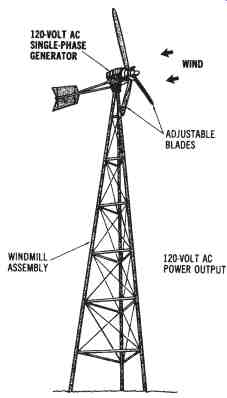
FIG. 4. A simplified wind power system
The primary disadvantage of a windmill is obvious. What do you do on days without wind? One answer is the use of storage batteries. Another disadvantage is the fact that windmills generally have a very low efficiency-about 50 percent. Although windmill power will probably never be a large contributor to the solving of any power crisis, some individuals have calculated that several large-diameter windmills, with a fairly constant wind, could produce many kilowatts of electrical power. They could play an important role in reducing the use of our natural resources for electrical power production, particularly on an individual basis.
MAGNETO-HYDRODYNAMIC (MHD) SYSTEMS
MHD stands for magnetohydrodynamic, a process of generating electricity by moving a conductor of small particles suspended in a superheated gas through a magnetic field. The process is illustrated in FIG. 5.
The metallic conductors are made of metals such as potassium or cesium, and can be recovered and used again. The gas is heated to a temperature much hotter than the temperature to which steam is heated in convention al power plants. This superheated gas is in what is called a plasma state at these high temperatures. This means that the electrons of many of the gas atoms have been stripped away, thus making the gas a good electrical conductor. The combination of metal and gas is forced through an electrode lined channel which is under the influence of a superconducting magnet that has a tremendous field strength. The magnet must be of the superconducting type, since a regular electromagnet of that strength would require too much power. A superconducting magnet, therefore, is one of the key parts to this type of generation system.
With high operating temperatures and a high-speed gas flow, it be comes a difficult task to keep the conductive channel from becoming destroyed. Cooling is very important and is accomplished by circulating a suitable coolant throughout jackets built into the channel. Also, due to the high temperatures and the metal particles moving at high speed, erosion of the channel becomes a critical problem. This problem has been eased by using a coal slag injected into the hot gas and metal stream. The coal slag acts to replace the eroded material as it is lost.
Pollution problems are very few. The main one is the high levels of nitrogen oxides that are produced as a direct result of the high combustion temperatures inherent to the system. Sulfur oxides and ash are also a problem for any plants using coal or oil. An afterburner system has been pro posed to eliminate the nitrogen oxides, while the sulfur oxides and the ash would be collected, separated chemically, and then recycled.
At this time, MHD generators are primarily experimental. There have been several large units made, but they have not operated for any significant time periods. Efficiency is of importance for this type of generation system. While the conventional steam generation system (fired by coal) is at most 40 percent efficient (that is, it turns 40 percent of the coal energy into electricity), and most nuclear-powered plants are about 33 percent efficient, MHD plants could operate at 60 percent efficiency. Thus, fuel supplies could be enhanced by using this generation system. At present, the future of MHD systems for large-scale electrical power generation is questionable.
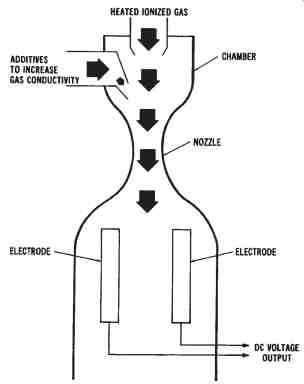
FIG. 5. Simplified drawing of a magneto hydrodynamic (MHD) generator system
NUCLEAR-FUSION POWER SYSTEMS
Another alternative power production method which has been considered is nuclear fusion. Deuterium, the type of fuel used for this process, is very abundant. The supply of deuterium is considered to be unlimited, since it exists as heavy hydrogen in sea water. The use of such an abundant fuel could solve some of our problems that are related to the depletion of fossil fuels. Another outstanding advantage of this system is that its radioactive waste products would be minimal.
The fusion process results when two atomic nuclei collide under con trolled conditions to cause a rearrangement of their inner structure and, thus, release a large amount of energy during the reaction. These nuclear reactions or fusings of atoms must take place under tremendously high temperatures. The energy released through nuclear fusion would be thou sands of times greater per unit than the energy from typical chemical reactions, and considerably greater than that of a nuclear-fission reaction.
The fusion reaction involves the fusing together of two light elements to form a heavier element, with heat energy being released during the re action. This reaction could occur when a deuterium ion and a tritium ion are fused together. A deuterium ion is a hydrogen atom with one additional neutron, and a tritium ion is a hydrogen atom with two additional neutrons. A temperature in the range of 100,000,000° C is needed for this reaction to produce a great enough velocity for the two ions to fuse together. Sufficient velocity is needed to overcome the forces associated with the ions. The deuterium-tritium fusion reaction produces a helium atom and a neutron. The neutron, with a high enough energy level, could cause another deuterium-tritium reaction of nearby ions, providing the time of the original reaction is long enough. A much higher amount of energy would be produced by a nuclear-fusion reaction than by a fission reaction. There are several different techniques being investigated for producing nuclear fusion. At this time, each is still in the theoretical development stage.
NUCLEAR-FUSION METHODS
Several methods are being considered today for using the heat from nuclear fusion to generate electrical power.
Magnetic-confinement Method
One method is called magnetic confinement. The proposed design of a magnetic-confinement power system is shown in FIG. 6. At present, it is thought that fusion reactors could be economical if the reaction can be carried out in an intense magnetic field provided by superconducting magnets. The magnet and the magnetic-field designs are very complex, however, and the forces associated with them are tremendous. Control ling the fusion reaction is still one of the major problems of trying to use this method; therefore, it remains to be studied further.
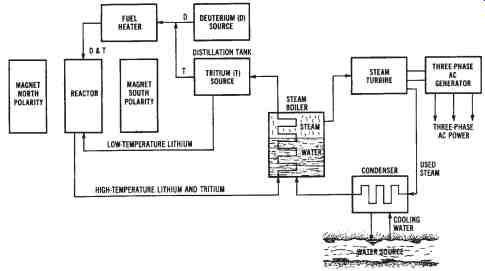
FIG. 6. Proposed design of a magnetic-confinement nuclear fusion power
system
Laser-induced Fusion
Laser-induced fusion should also be mentioned. This method relies on inertia rather than an intense magnetic field for the confinement of the nu clear fuel. In this method, a small pellet of frozen fuel is injected into a combustion chamber. There, it is hit by several short, intense, laser beams coming into the chamber from several directions. This process happens very quickly and causes the pellet to collapse, due to the intensity of the beams.
The fuel is rapidly heated. The fusion reaction takes place at an instant just before the material in the pellet can overcome its inertia and expand, due to the intense heating effect. This process uses a laser beam to produce a sufficient amount of heat to cause the nuclear-fusion reaction. A proposed design for a laser-induced fusion power system is shown in FIG. 7. As with other fusion methods, this method has not been tested. It is being theoretically developed. However, since the magnetic-confinement method has not been developed beyond the conceptual stage, other methods, such as the laser-induced method, must be considered. It is thought that the pulsed laser technique may be a viable alternative method for producing sustained nuclear-fusion reactions. This process is presently being developed with deuterium being considered as the proposed fuel.

FIG. 7. Proposed design of a laser-induced nuclear fusion power system
FUTURE OF NUCLEAR FUSION
Since nuclear fusion is considered to be environmentally safe and would use a very abundant fuel, much research is being done to formulate ways of controlling the fusion-reaction process. Fusion reactors have not yet been developed beyond the theoretical stages. The problems involved in constructing a fusion reactor center around the vast amounts of heat produced. The fusion fuel must be heated to a high temperature and, then, the heated fuel must be confined for a long enough period of time that the energy released by the fusion process can become greater than the energy that was required to heat the fuel to its reaction temperature. This is necessary in order to sustain the fusion reaction and to produce continuous energy.
All present fusion power-plant designs have basic problems. Solutions to these problems, and development of economically attractive commercial systems, will take many years and much money. However, it seems possible that such systems may someday be developed.
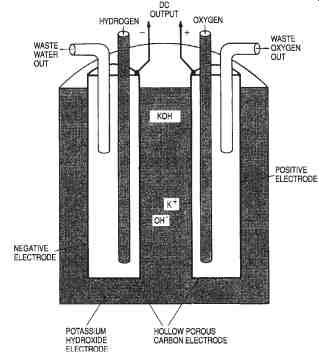 FIG. 8. Simplified drawing of an oxygen-hydrogen fuel cell
FIG. 8. Simplified drawing of an oxygen-hydrogen fuel cell
FUEL-CELL SYSTEMS
Another alternative energy system which has been researched is the fuel cell. Fuel cells convert the chemical energy of fuels into electrical energy. An advantage of this method is that its efficiency is greater than steam turbine-driven production systems, since the conversion of energy is directly from chemical to electrical. Ordinarily, fuel cells use oxygen and hydrogen gas as fuels, as shown in FIG. 8. Instead of consuming its electrodes, as ordinary batteries do, a fuel cell is supplied with chemical reactants from an external source. Ordinarily, hydrogen gas is delivered to the anode of the cell and oxygen gas or air is delivered to the cathode. The reaction of these gases is similar to the reverse of electrolysis. (During the electrolysis process, an electric current decomposes water into hydrogen and oxygen.)
Fuel cells were developed long ago. It was known early that electrochemical reactions could be used to convert chemical energy directly to electrical energy. The first commercial fuel cells were used as auxiliary power sources for United States space vehicles. These were hydrogen oxygen fuel cells. The development of fuel cells has brought about some cells with a power capacity of up to 500 watts. Some cells that are in the re search stages have a power output of up to 100 kilowatts. These fuel cells produce low-voltage direct current. Several cells may be connected in series-parallel configurations to produce greater voltage and current levels.
Several large companies are performing experiments with the design of fuel cells. Many new technological approaches to fuel cells are being developed. Large-scale systems are planned that may use phosphoric acid as an electrolyte. This system will operate with a variety of hydrocarbon fuels.
Cells presently being developed use high-temperature carbon or alkaline electrolytes. Cells in the developmental stages might use synthetic fuels derived from coal.
Some problems have been encountered in the development of fuel cells. The chemical reaction brought about by the fuels requires a catalyst. The importance of the catalyst is greater at lower operating temperatures. At higher temperatures, cheaper and more abundant catalysts may be used. However, some designers speculate that the catalysts required for lower temperature operation may become unavailable or, if not, at least very expensive in the future. At present, the initial cost of a fuel-cell system is very great. A system, at this time, would not be competitive with other power systems in operation. Another developmental problem is that of water disposal. A vast amount of water is produced by the chemical re actions of the fuels.
In addition to space applications, other applications could potentially include mobile electrical power sources. It has been suggested that fuel cells could be used as power sources to drive electric cars. Also, fuel cells are being considered as power sources for trains, submarines, and military vehicles. However, the use of fuel cells for large-scale power systems would not be feasible.
TIDAL POWER SYSTEMS
The rise and fall of waters along coastal areas, which is caused by gravitational forces, is the basis for the tidal electrical power production method. There are presently some tidal power systems in operation. Tidal systems would be desirable, since they do not pollute the atmosphere, do not consume any natural resource, and do not drastically change the surrounding environment as some conventional hydroelectric systems do.
The depth of tidal water varies greatly at different times of the year.
These depths are determined by changes in the sun and moon in relation to the earth. Tides are readily predictable, since the same patterns are established year after year. A tidal power system would have to be constructed where water in sufficient quantity could be stored with a mini mum amount of dam construction. A tidal system could be made to operate during the rise of tides and the fall of tides. Also, the pumped-storage method could be used in conjunction with tidal systems to assure power output during peak load times. A potential tidal system site along the United States-Canada border has been studied; however, the economic feasibility of tidal systems at this time is not too promising. One tidal system that is in operation is at Normandy, France.
COAL-GASIFICATION FUEL SYSTEMS
The process of coal gasification has aroused interest in recent years.
This process involves the conversion of coal or coke to a gaseous state through a reaction with air, oxygen, carbon dioxide, or steam. Many people feel that this process will be able to produce a natural gas substitute.
Some of the methods of producing gas from coal include:
1. The BI-CAS process, in which a reaction of coal, steam, and hydrogen gas produces methane gas.
2. The COCAS process, in which a liquid fuel and a gaseous fuel are produced.
3. The CSG process (or consolidated synthetic gas process), which develops a very slow reaction to produce methane.
4. The Hydrane process, in which methane is produced by a direct reaction of hydrogen and coal, with no intermediate gas production.
5. The Synthane process, in which methane is produced by a method involving several different steps.
Coal gasification may be one solution to the problem of our depleting natural gas supply. Since some electrical power systems use natural gas as the fuel, we should be concerned about coal gasification as an alternative method to aid in the production of electrical power.
OIL-SHALE FUEL-PRODUCTION SYSTEMS
Another method which should be mentioned as an alternative method that could aid in the production of electrical energy is fuel from oil shale.
There is a potential fuel source located at the oil-shale deposits which exist primarily in Colorado, Wyoming, and Utah. This oil shale was formed by a process similar to that which created crude petroleum. However, there was never enough underground heat or pressure to convert the organic sediment to the same consistency as oil. Instead, a waxy hydrocarbon called kerogen was produced. This compound is mixed with fine rock and is referred to as oil shale.
Extracting crude petroleum from this substance is a very complex process that starts with either underground or strip mining. The mined rock is crushed and then heated to produce a raw oil, which, in turn, must be upgraded to a usable level. All of these operations could take place at the mining site. In addition, large amounts of shale waste must be removed.
The resulting waste substance is about the consistency and color of fire place soot. The waste occupies more volume than the original oil-shale formations. The potential impact of oil-shale development is questionable.
Vast quantities of land might be disturbed. There are definitely many factors to consider in addition to our energy needs.
ALTERNATIVE NUCLEAR POWER PLANTS
A unique concept in electrical power production, considered in the 1970s, was called a floating nuclear power plant. Floating nuclear plants were proposed to be nuclear-fission plants mounted on huge floating platforms for operation on the water. These systems were planned for use on the Atlantic Ocean. Breakwaters would surround the power plant to protect it from waves and ship collisions. These units could be located on rivers, inlets, or in the ocean. The plants could be manufactured on land and then transported to the area where they would be used. The electrical power produced by the plant could be distributed by underwater cables to the shore. The power lines could then be connected to onshore overhead power-transmission lines. The floating nuclear power plants could be mass-produced, unlike conventional nuclear plants which are individually built.
Floating nuclear plants could have advantages over other power systems. There are obvious ecological benefits. A plant located on the ocean would have less thermal effect on the water due to heat dissipation over a large body of water. Also, these units would not require the use of land for locating power plants. They would be flexible, since they could be located on rivers, inlets, or oceans.
This discussion is included to stimulate thought about potential "alternative" systems for producing electrical power. Each of the systems discussed have potential problems; however, serious experimentation must be conducted to assure that electrical power can be produced economically. Our technology is dependent upon low-cost electrical power.
BIOMASS SYSTEMS
Another alternative system being considered as a potential method of producing electrical power is biomass. Biomass sources of energy for possible use as fuel sources for electrical power plants are wood, animal wastes, garbage, food processing wastes, grass, and kelp from the ocean.
Many countries in the world use biomass sources as primary energy sources. In fact, the United States used some of the biomass sources of energy almost exclusively for many years. The potential amount of energy which could be produced in the United States by biomass sources is substantial at this time also. There are still several questions about using biomass sources of energy for producing electrical; however, as fossil fuels become less abundant, biomass sources may receive more active consideration.